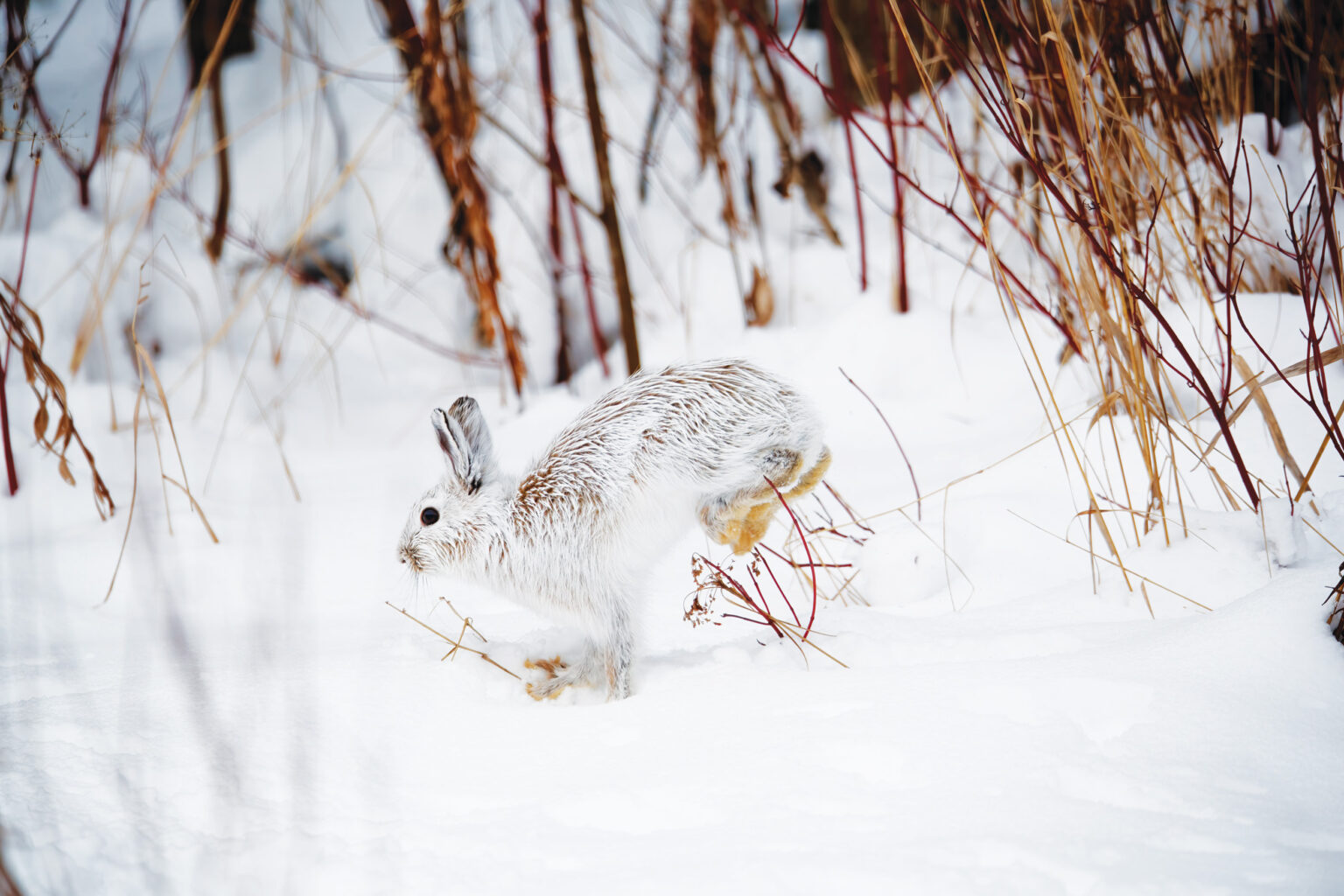The Nature of Snowshoes Hares and Climate Change

By Chelsea Clarke Sawyer, Communications Coordinator
In my 15 years living in Northern New England, I’ve never seen a Snowshoe Hare (Lepus americanus), despite spending plenty of time in their boreal habitat, and seeing lots of tracks, scat, and browse. There’s a good reason for this: Snowshoe Hares’ speckled brown summer coats blend into the shadowy conifer forests they call home, while their white winter coats are perfectly camouflaged against snow. There’s only one problem — winter snow cover is becoming less reliable, and a white hare against a brown landscape is about as un-camouflaged as you can get.
While this contrast increases my chances of finally spotting this elusive critter, it’s bad news for the hares, which are preferred prey for everyone from bobcats, coyotes, and lynx, to martens, fishers, and owls. This type of mismatch is known as a phenological asynchrony. Asynchronies are better known between species, such as plants and their pollinators, but, as with hares, they also happen between animals and their physical environment.
This asynchrony can make a real difference. Studies have shown decreased hare survival in years when snow cover comes late and animals stand out against their habitat for longer. Snow cover is based on climate and weather, whereas Snowshoe Hare molting is linked to day length. Historically, decreasing day length more reliably signaled that snow was on the way and that it was time to shed the brown summer coat. But with climate change often leaving bare ground even during the shortest days, bright white hares are spending more time in an increasingly
brown world.
There is hope, though. Since seasonal day length won’t change and molt timing is genetic, hares and other winter-white animals like weasels will need to evolve to start their molts at shorter day lengths. That may not sound very hopeful since evolution happens over many, many generations, but it turns out hares have the tools to do it.
First, hares are great at producing many generations very quickly. It’s what they and their rabbit cousins are known for! And with intense selective pressure by predators, evolution towards better camouflage can happen surprisingly quickly. We know this because different populations of Snowshoe Hare have different molt timing, corresponding to the local snow conditions. This means the hares on Camel’s Hump could molt days or even weeks apart from those in the Northeast Kingdom,each population precisely matching the historical local conditions. This timing is genetic — a hare moved from one area to another will stick with its inherited molting schedule, rather than change to match the local population. This means the genes to molt at different day lengths already exist, ready to be expressed by natural selection. No new mutations required.
But what if snow cover doesn’t just start later and end earlier in the future? What if, as most models suggest, it’s just entirely less predictable, with more midwinter thaws and more months of thin, patchy snow? It turns out the hares might have an answer for that, too. In some areas with low or unpredictable snow cover, like the Pacific Northwest, hare populations contain a mix of individuals that turn white, stay patchy, and stay brown in winter. Each year, predators eat more hares that are poorly matched to that winter’s snowpack, while the better-matched individuals survive to reproduce, changing the balance of white, brown, and patchy hares over time to match the changing climate. Will we start seeing patchy hares in New England in the coming decades? Who knows, but I like knowing that Snowshoe Hares are ready to adapt, even if it might take a while. And maybe I’ll finally see one while they’re working on it.

